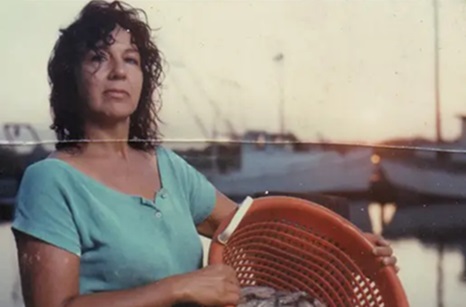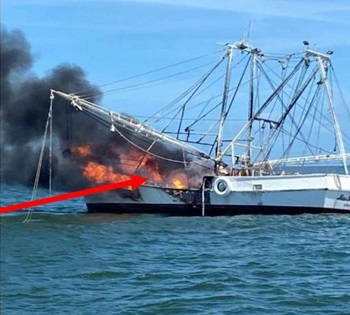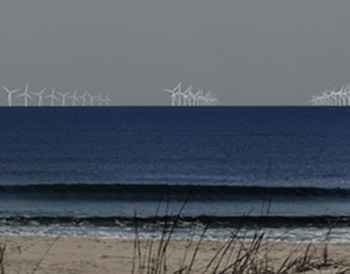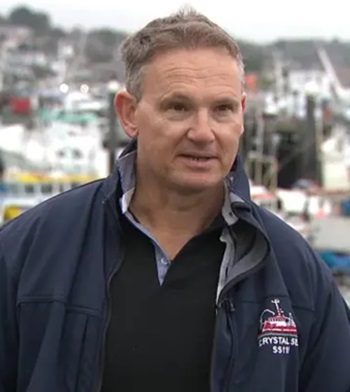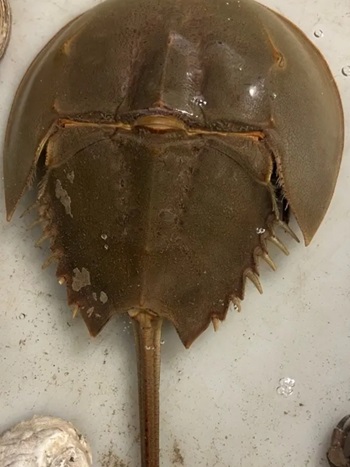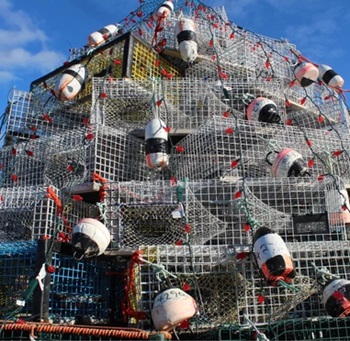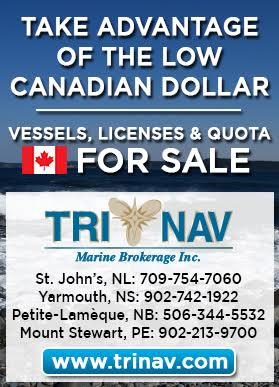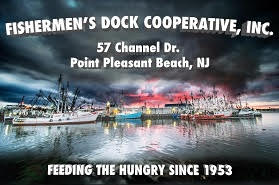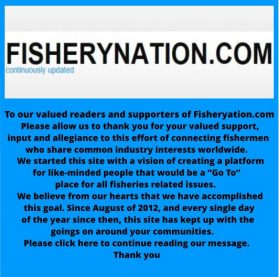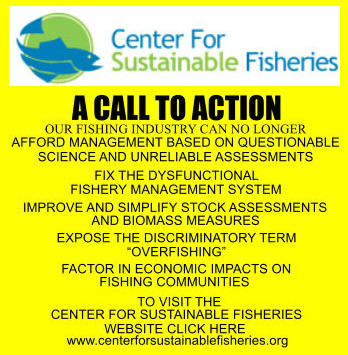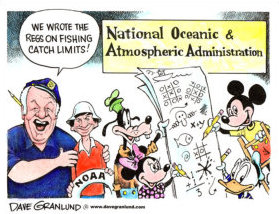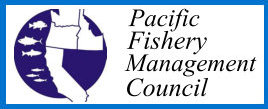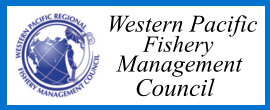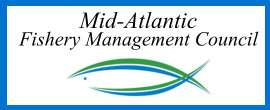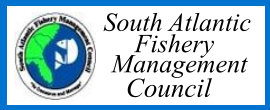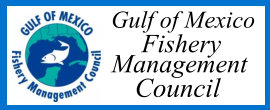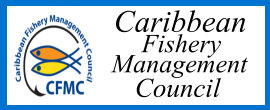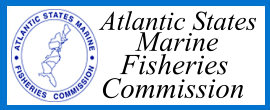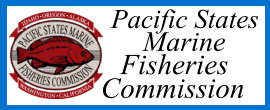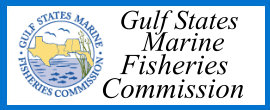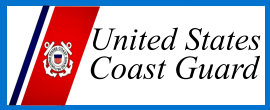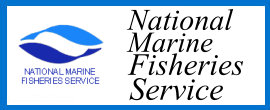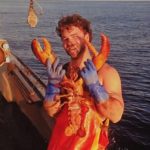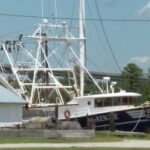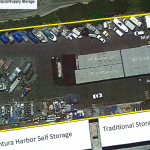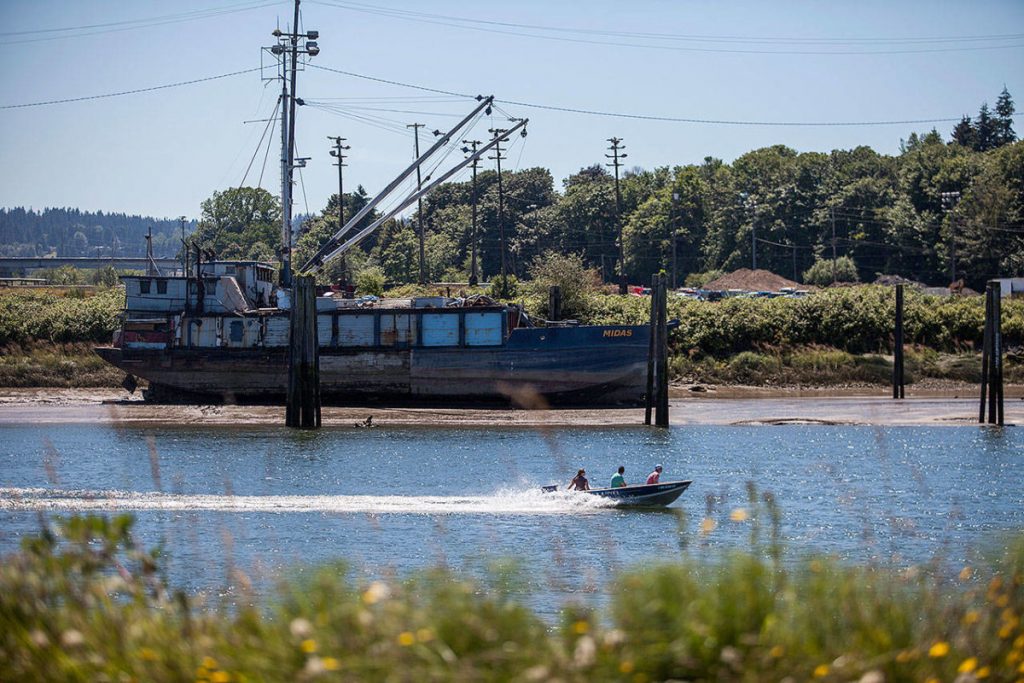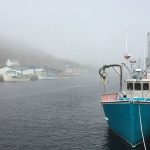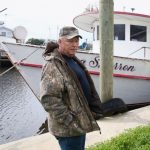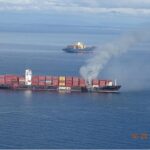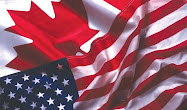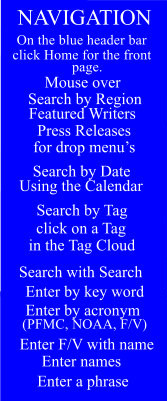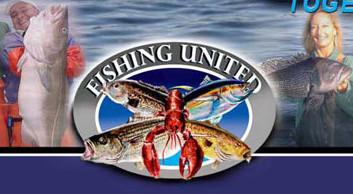
“Mississippi Seafood Labeling Task Force.” The goal is to bring a panel of experts and governing figures to the table,,,
Legislation initially intended to require those selling seafood in Mississippi to be transparent about where the food comes from, has been altered to create a task force to tackle the state’s mislabeling crisis. House Bill 602, which cruised through its chamber without a dissenting vote back in February, was gutted by the Senate before lawmakers in the chamber voted unanimously to advance an amended version of the bill on Thursday. Instead of expanding an existing state law requiring restaurants and others selling certain seafood items to advertise the food’s country of origin, the text now creates the “Mississippi Seafood Labeling Task Force.” more, >>CLICK TO READ<< 14:07






 Chinese counter tariffs on Canadian seafood will include east coast lobster. Nova Scotian exporters have heard directly from buyers in China that the 25 per cent tariff goes into effect March 20. “For America and China to simultaneously, and for entirely different reasons, target Canadian seafood is incredibly poor luck, and beyond that it is incredibly hard to comprehend,” Stewart Lamont, owner of Tangier Lobster, said on Sunday. Just over 40 per cent of Nova Scotia’s live lobster exports go to China. About 40 per cent of live lobster exports, along with 70 per cent of frozen processed lobster, go to the United States.
Chinese counter tariffs on Canadian seafood will include east coast lobster. Nova Scotian exporters have heard directly from buyers in China that the 25 per cent tariff goes into effect March 20. “For America and China to simultaneously, and for entirely different reasons, target Canadian seafood is incredibly poor luck, and beyond that it is incredibly hard to comprehend,” Stewart Lamont, owner of Tangier Lobster, said on Sunday. Just over 40 per cent of Nova Scotia’s live lobster exports go to China. About 40 per cent of live lobster exports, along with 70 per cent of frozen processed lobster, go to the United States.  Like everyone, Nova Scotia’s fishing industry has been trying to parse what U.S. President Donald Trump’s tariffs will mean for them. “It’s too early to know yet,” said Geoff Irvine, executive director of the Lobster Council of Canada. There is little lobster coming ashore right now, which buys the industry time to hope for a resolution that sees the 25 per cent tariff on all Canadian products heading south dropped. Fishing will pick up later this month off southwest Nova Scotia as waters warm, and then in April seasons will start opening from Newfoundland and Prince Edward Island to Nova Scotia, with massive quantities of crustaceans coming over wharves throughout the region by May 1.
Like everyone, Nova Scotia’s fishing industry has been trying to parse what U.S. President Donald Trump’s tariffs will mean for them. “It’s too early to know yet,” said Geoff Irvine, executive director of the Lobster Council of Canada. There is little lobster coming ashore right now, which buys the industry time to hope for a resolution that sees the 25 per cent tariff on all Canadian products heading south dropped. Fishing will pick up later this month off southwest Nova Scotia as waters warm, and then in April seasons will start opening from Newfoundland and Prince Edward Island to Nova Scotia, with massive quantities of crustaceans coming over wharves throughout the region by May 1.  Newfoundland and Labrador’s fishing industry is preparing for life with heavy economic tariffs in place. Fisheries Minister Gerry Byrne is calling this moment the biggest challenge to the industry since the 1992 cod moratorium. “Never since the 1992 moratorium has such a challenge been put before us,” Byrne told reporters on Tuesday. “While all sectors of the economy are affected by our ally’s betrayal, none more so than our fishery.” Ninety-six per cent of snow crab harvested in Newfoundland and Labrador in 2024 was shipped and sold to the United States. But Byrne says it’s unlikely the U.S. market is avoided entirely, and it will likely come down to what markets are willing to pay. “I have absolutely no doubt that even with a 25 per cent tariff, we can indeed sell to the United States. Buyers will buy, consumers will consume, it’s a question of the details,” he said. “U.S. consumers love Newfoundland and Labrador’s snow crab.” Video,
Newfoundland and Labrador’s fishing industry is preparing for life with heavy economic tariffs in place. Fisheries Minister Gerry Byrne is calling this moment the biggest challenge to the industry since the 1992 cod moratorium. “Never since the 1992 moratorium has such a challenge been put before us,” Byrne told reporters on Tuesday. “While all sectors of the economy are affected by our ally’s betrayal, none more so than our fishery.” Ninety-six per cent of snow crab harvested in Newfoundland and Labrador in 2024 was shipped and sold to the United States. But Byrne says it’s unlikely the U.S. market is avoided entirely, and it will likely come down to what markets are willing to pay. “I have absolutely no doubt that even with a 25 per cent tariff, we can indeed sell to the United States. Buyers will buy, consumers will consume, it’s a question of the details,” he said. “U.S. consumers love Newfoundland and Labrador’s snow crab.” Video,  Three herring fishermen from Cape May fought the law all the way to the U.S. Supreme Court and won. In doing so, the three men overturned the 40-year-old U.S. Supreme Court, thus making it easier for them and others to challenge federal regulations in court. But their battle is not over. The fishermen are challenging what they say is an unlawful requirement that forces them to surrender 20% of their earnings to pay at-sea monitors, who gather information that is used to regulate their industry. That worked out to as much as $700 a day, which is more pay than the crews take home sometimes. The requirement was imposed on them by an executive branch agency — in this case the U.S. Dept. of Commerce, which oversees the National Oceanic and Atmospheric Administration, which in turn regulates the nation’s fisheries. The at-sea monitors were never approved by Congress, but due to the so-called Chevron deference, the fishermen were handicapped to fight the rule, because the courts always deferred to the regulatory agencies.
Three herring fishermen from Cape May fought the law all the way to the U.S. Supreme Court and won. In doing so, the three men overturned the 40-year-old U.S. Supreme Court, thus making it easier for them and others to challenge federal regulations in court. But their battle is not over. The fishermen are challenging what they say is an unlawful requirement that forces them to surrender 20% of their earnings to pay at-sea monitors, who gather information that is used to regulate their industry. That worked out to as much as $700 a day, which is more pay than the crews take home sometimes. The requirement was imposed on them by an executive branch agency — in this case the U.S. Dept. of Commerce, which oversees the National Oceanic and Atmospheric Administration, which in turn regulates the nation’s fisheries. The at-sea monitors were never approved by Congress, but due to the so-called Chevron deference, the fishermen were handicapped to fight the rule, because the courts always deferred to the regulatory agencies. 
 So much sand built up in Montauk Inlet that commercial fishing boats bumped the bottom, ran aground, some large trawlers were forced to dock in Rhode Island, and surfers rode waves crashing over the shoals. It was dire straits for the largest commercial fishing port in New York State until a U.S. Army Corps of Engineers’ dredge ship that arrived over Valentines Day weekend began the emergency project to make the inlet safely passable again. The arrival came two weeks after the agency secured funding for the project and surveyed the inlet to verify reports that shoaling made for dangerously shallow waters in parts of the inlet, especially at low tide.
So much sand built up in Montauk Inlet that commercial fishing boats bumped the bottom, ran aground, some large trawlers were forced to dock in Rhode Island, and surfers rode waves crashing over the shoals. It was dire straits for the largest commercial fishing port in New York State until a U.S. Army Corps of Engineers’ dredge ship that arrived over Valentines Day weekend began the emergency project to make the inlet safely passable again. The arrival came two weeks after the agency secured funding for the project and surveyed the inlet to verify reports that shoaling made for dangerously shallow waters in parts of the inlet, especially at low tide.  The 50th edition of the Maine Fishermen’s Forum begins on Thursday, Feb. 27, with seminars on shellfish, green crabs and rockweed, and wraps up on Saturday night, March 1, with its annual closing banquet and dance party. During the three-day event, fishermen, seafood dealers, ocean scientists and representatives from state, federal and nonprofit marine organizations convene to discuss all aspects of Maine’s fishing industry at the Samoset Resort and Event Center in Rockport. The seminars are free and open to the public, as is a marine trade show that spreads out over two floors of the center. “We have over 120 exhibitors offering everything from engines to bank loans, survival gear, electronics, clothing, bait and more,” organizers said.
The 50th edition of the Maine Fishermen’s Forum begins on Thursday, Feb. 27, with seminars on shellfish, green crabs and rockweed, and wraps up on Saturday night, March 1, with its annual closing banquet and dance party. During the three-day event, fishermen, seafood dealers, ocean scientists and representatives from state, federal and nonprofit marine organizations convene to discuss all aspects of Maine’s fishing industry at the Samoset Resort and Event Center in Rockport. The seminars are free and open to the public, as is a marine trade show that spreads out over two floors of the center. “We have over 120 exhibitors offering everything from engines to bank loans, survival gear, electronics, clothing, bait and more,” organizers said.  In the first conversation Grant Fishbook had with Andy Vitaljic more than a decade ago, Andy surprised the Christ the King Community Church pastor by saying he wanted his tombstone to read, “Andy fed the hungry.” The third-generation Croatian fisherman, who built a commercial seafood empire in Whatcom County and died at the age of 91 in September 2024, got his wish. Andy may be best remembered for his tireless efforts to help people in need, and his mausoleum inscription reflects that. Fishbook said Andy was one of the most generous humans he’d ever met — a compliment that extends to his widow, Erin. “The Vitaljics have their names attached to all kinds of humanitarian organizations around the county,” he said. “Andy was the brain and heart and passion and Erin was the organizer who made sure the ideas actually became real.” Now, Erin is looking for a successor to the empire Andy spent five decades building.
In the first conversation Grant Fishbook had with Andy Vitaljic more than a decade ago, Andy surprised the Christ the King Community Church pastor by saying he wanted his tombstone to read, “Andy fed the hungry.” The third-generation Croatian fisherman, who built a commercial seafood empire in Whatcom County and died at the age of 91 in September 2024, got his wish. Andy may be best remembered for his tireless efforts to help people in need, and his mausoleum inscription reflects that. Fishbook said Andy was one of the most generous humans he’d ever met — a compliment that extends to his widow, Erin. “The Vitaljics have their names attached to all kinds of humanitarian organizations around the county,” he said. “Andy was the brain and heart and passion and Erin was the organizer who made sure the ideas actually became real.” Now, Erin is looking for a successor to the empire Andy spent five decades building.  Federal fishery managers took steps on Tuesday to impose new rules to prevent Alaska chum salmon from being scooped into nets used to catch Bering Sea pollock, an industrial-scale fishery that makes up the nation’s largest single-species commercial seafood harvest. The North Pacific Fishery Management Council advanced a suite of new protections intended to combat the pollock trawlers’ salmon bycatch, the term for the incidental catch of unintended species. Proposed steps in the package include numeric caps on total chum salmon bycatch, with varying allocations for different sectors of the pollock fleet; protective limits in corridors known to be used by salmon migrating through the ocean back to Western Alaska freshwater spawning areas; and provisions that would link new limits in the ocean to real-time salmon counts and conditions in the rivers.
Federal fishery managers took steps on Tuesday to impose new rules to prevent Alaska chum salmon from being scooped into nets used to catch Bering Sea pollock, an industrial-scale fishery that makes up the nation’s largest single-species commercial seafood harvest. The North Pacific Fishery Management Council advanced a suite of new protections intended to combat the pollock trawlers’ salmon bycatch, the term for the incidental catch of unintended species. Proposed steps in the package include numeric caps on total chum salmon bycatch, with varying allocations for different sectors of the pollock fleet; protective limits in corridors known to be used by salmon migrating through the ocean back to Western Alaska freshwater spawning areas; and provisions that would link new limits in the ocean to real-time salmon counts and conditions in the rivers.  The federal US Wind Final Environmental Impact Statement concludes on page 135, “U.S. offshore wind projects would likely have a limited impact on global emissions and climate change.” So no impact on sea-level rise.
The federal US Wind Final Environmental Impact Statement concludes on page 135, “U.S. offshore wind projects would likely have a limited impact on global emissions and climate change.” So no impact on sea-level rise.  The Suffolk County Legislature is considering a bill that, it says, will help commercial fishermen. The bill, now in committee, will allow property owners of commercial fishing businesses to apply for a conservation easement that would restrict future development. The bill was supposed to come to a vote late in 2024 but is now being studied to broaden its scope. The bill did receive positive support at a public hearing in November before the full legislature. Earlier in 2024, Suffolk County Executive Edward P. Romaine signed legislation increasing spending for farmland preservation to $15 million annually. He said the commercial fishing industry needed support as well. According to the legislation, any type of business that contributes to working waterfronts, such as gear storage, aquaculture, docks, boat repairs, could benefit from the pending legislation.
The Suffolk County Legislature is considering a bill that, it says, will help commercial fishermen. The bill, now in committee, will allow property owners of commercial fishing businesses to apply for a conservation easement that would restrict future development. The bill was supposed to come to a vote late in 2024 but is now being studied to broaden its scope. The bill did receive positive support at a public hearing in November before the full legislature. Earlier in 2024, Suffolk County Executive Edward P. Romaine signed legislation increasing spending for farmland preservation to $15 million annually. He said the commercial fishing industry needed support as well. According to the legislation, any type of business that contributes to working waterfronts, such as gear storage, aquaculture, docks, boat repairs, could benefit from the pending legislation.  Nova Scotia Premier Tim Houston says his government will respect the oil and gas development moratorium for Georges Bank and he’s blaming unnamed special interest groups looking to “promote falsehoods” for a misunderstanding of his position on the matter. The premier made the comments in a letter he sent fishing industry representatives several days after saying his government would be open to revisiting the decades-old development moratorium around the valuable and productive fishing grounds. “This narrative grew because special interests aligned to promote falsehoods,” Houston wrote in the letter.
Nova Scotia Premier Tim Houston says his government will respect the oil and gas development moratorium for Georges Bank and he’s blaming unnamed special interest groups looking to “promote falsehoods” for a misunderstanding of his position on the matter. The premier made the comments in a letter he sent fishing industry representatives several days after saying his government would be open to revisiting the decades-old development moratorium around the valuable and productive fishing grounds. “This narrative grew because special interests aligned to promote falsehoods,” Houston wrote in the letter.  The dock’s future depends on the outcome of a Feb. 3 appeal before the state Shoreline Hearings Board. In the online-only proceeding, Jim Franich, a former city council member and neighbor to the project, will square off against the city, the Ancich Dock’s owner and their respective lawyers, challenging the city of Gig Harbor Hearing Examiner’s decision granting the project a Shoreline Substantial Development Permit. The flap over the Ancich Dock stirs more than the usual old vs. new development tensions locally. It touches a nerve wrapped around the city’s very identity: Is Gig Harbor a fishing village or a collection of upscale marinas? Is its iconic vessel a purse seiner or a luxury motor yacht?
The dock’s future depends on the outcome of a Feb. 3 appeal before the state Shoreline Hearings Board. In the online-only proceeding, Jim Franich, a former city council member and neighbor to the project, will square off against the city, the Ancich Dock’s owner and their respective lawyers, challenging the city of Gig Harbor Hearing Examiner’s decision granting the project a Shoreline Substantial Development Permit. The flap over the Ancich Dock stirs more than the usual old vs. new development tensions locally. It touches a nerve wrapped around the city’s very identity: Is Gig Harbor a fishing village or a collection of upscale marinas? Is its iconic vessel a purse seiner or a luxury motor yacht? 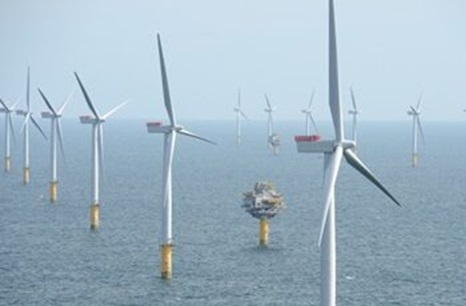
 As U.S. President Donald Trump begins his second term in office, the president of the FFAW says she’s playing the waiting game to see how threatened tariffs will take shape. FFAW President Dwan Street voiced concern about how a proposed 25 per cent tariff on all Canadian goods — including fish — could affect local markets. For example, she said, 90 per cent of snow crab exports from Newfoundland and Labrador go to the United States. “A 25 per cent tariff, we see it as being absolutely devastating,” Street said Monday. An official with Trump’s administration confirmed to Reuters on Monday that Trump will hold off on tariffs for now but will direct agencies to “investigate and remedy persistent trade deficits and address unfair trade and currency policies by other nations. The majority of Canada’s premiers, including Andrew Furey, have said they’ll stand against any tariffs. “Video, more,
As U.S. President Donald Trump begins his second term in office, the president of the FFAW says she’s playing the waiting game to see how threatened tariffs will take shape. FFAW President Dwan Street voiced concern about how a proposed 25 per cent tariff on all Canadian goods — including fish — could affect local markets. For example, she said, 90 per cent of snow crab exports from Newfoundland and Labrador go to the United States. “A 25 per cent tariff, we see it as being absolutely devastating,” Street said Monday. An official with Trump’s administration confirmed to Reuters on Monday that Trump will hold off on tariffs for now but will direct agencies to “investigate and remedy persistent trade deficits and address unfair trade and currency policies by other nations. The majority of Canada’s premiers, including Andrew Furey, have said they’ll stand against any tariffs. “Video, more,  A dispute that’s smoldered for weeks in the Newfoundland and Labrador fishing industry has erupted into an inferno, with Quin-Sea Fisheries dropping a metaphorical hand grenade as it cuts ties with the trade association that represents most seafood producers in the province. In a strongly worded news release issued Monday morning, the St. John’s-based company said it was withdrawing from the Association of Seafood Producers, saying it could no longer tolerate the ASP’s “internal strong-arming and mistreatment” of members. The decision comes after many months of strained relations between Quin-Sea and the ASP and is more fallout from a contentious period in the fishery dating back to last winter, when harvesters protested in a bid to bring more free enterprise to the industry.
A dispute that’s smoldered for weeks in the Newfoundland and Labrador fishing industry has erupted into an inferno, with Quin-Sea Fisheries dropping a metaphorical hand grenade as it cuts ties with the trade association that represents most seafood producers in the province. In a strongly worded news release issued Monday morning, the St. John’s-based company said it was withdrawing from the Association of Seafood Producers, saying it could no longer tolerate the ASP’s “internal strong-arming and mistreatment” of members. The decision comes after many months of strained relations between Quin-Sea and the ASP and is more fallout from a contentious period in the fishery dating back to last winter, when harvesters protested in a bid to bring more free enterprise to the industry.  Dozens of protesters gathered in New Bedford Saturday, demanding an end to offshore wind projects immediately. The protest came one day after final federal approval for the Southcoast Wind Project, 26 nautical miles south of Martha’s Vineyard. Protesters said they were outraged over potential impacts on the environment, coastal neighborhoods, and the commercial fishing industry. Video, Photos,
Dozens of protesters gathered in New Bedford Saturday, demanding an end to offshore wind projects immediately. The protest came one day after final federal approval for the Southcoast Wind Project, 26 nautical miles south of Martha’s Vineyard. Protesters said they were outraged over potential impacts on the environment, coastal neighborhoods, and the commercial fishing industry. Video, Photos,  State Rep. Terri Leo Wilson’s bill requiring restaurants to disclose whether they serve domestic or imported shrimp is a necessary and reasonable step against a species of consumer fraud that’s abetting the demise of a local industry. Other members of the Texas Legislature should work to make House Bill 749 the law. The law would require restaurant operators to disclose on menus and in other ways visible to consumers the origin of the shrimp they serve. The bill echoes Federal Trade Commission warnings issued last year threatening fines and other action for advertising or even using imagery that falsely implies operators are serving local seafood. The proposed law is necessary to protect consumers from misleading advertising and might help a struggling domestic industry, Leo Wilson said. “We have a shrimp industry that’s really suffering,” the Galveston Republican said.
State Rep. Terri Leo Wilson’s bill requiring restaurants to disclose whether they serve domestic or imported shrimp is a necessary and reasonable step against a species of consumer fraud that’s abetting the demise of a local industry. Other members of the Texas Legislature should work to make House Bill 749 the law. The law would require restaurant operators to disclose on menus and in other ways visible to consumers the origin of the shrimp they serve. The bill echoes Federal Trade Commission warnings issued last year threatening fines and other action for advertising or even using imagery that falsely implies operators are serving local seafood. The proposed law is necessary to protect consumers from misleading advertising and might help a struggling domestic industry, Leo Wilson said. “We have a shrimp industry that’s really suffering,” the Galveston Republican said. 

